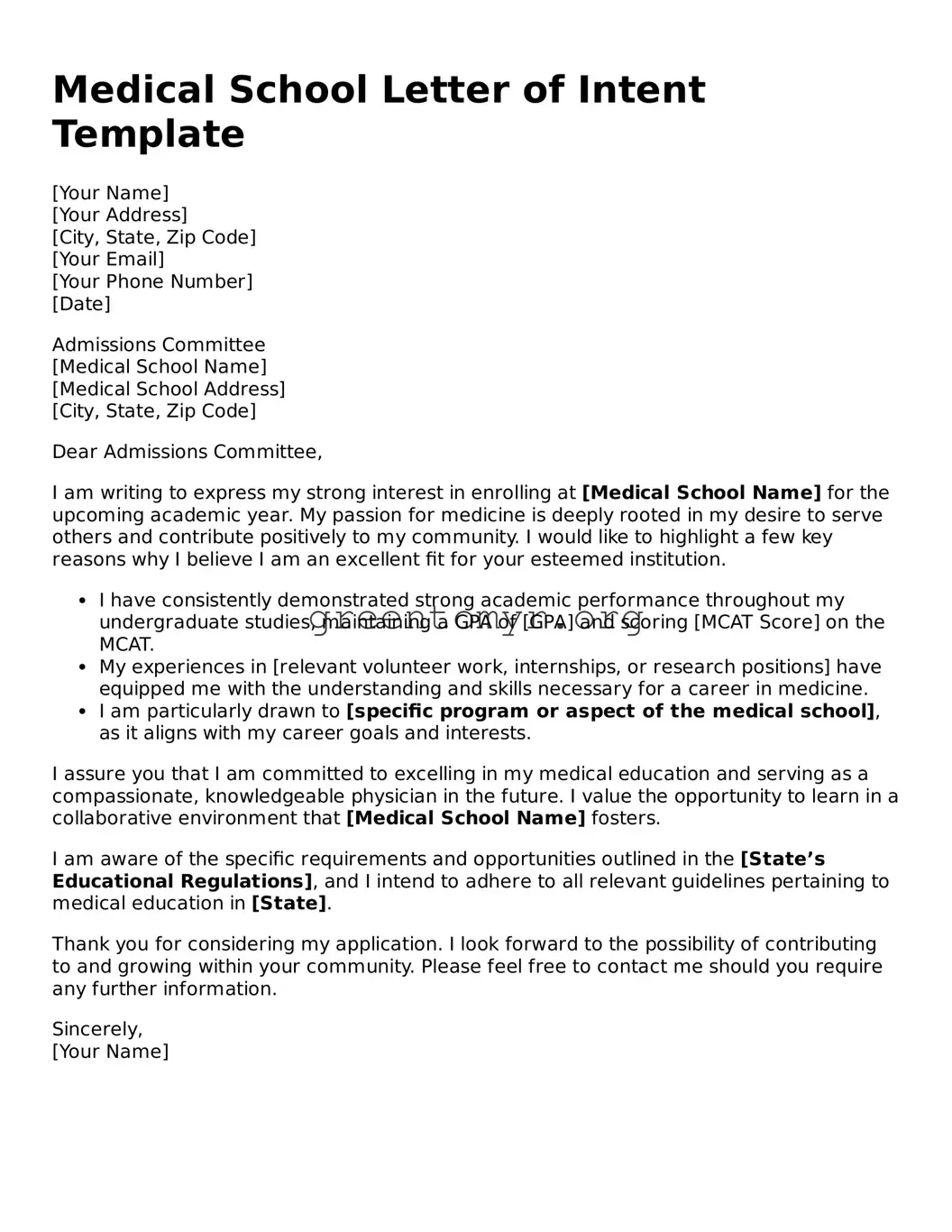Filling out the Medical School Letter of Intent (LOI) form is a crucial step for applicants eager to express their commitment to a particular institution. However, many individuals stumble on this pathway due to a few common mistakes. Awareness of these pitfalls can significantly enhance an applicant’s chances of standing out positively.
One frequent mistake involves lack of specificity. Applicants often draft generic letters that could apply to any medical school. Admissions committees appreciate personalized notes that demonstrate genuine interest in their specific institution. Reference elements like unique programs, faculty, or recent achievements of the school, showcasing an applicant’s knowledge and enthusiasm for that particular environment.
Another common error is failing to proofread. Typos, grammatical errors, and awkward phrasing can undermine an otherwise strong application. A well-constructed letter reflects attention to detail and professionalism. Take the time to revise and, if possible, have someone else review the letter before submission. Fresh eyes can catch mistakes that the original writer might miss.
Some applicants neglect to address their previous applications. If this isn’t the first time applying to medical school, be transparent about previous attempts and how experiences have shaped your journey. Sharing insights about growth and newfound perspectives can resonate well with the admissions committee and show resilience in the face of challenges.
Another frequent oversight is not including future goals. Applicants often focus on past achievements but forget to articulate their future aspirations. The admissions committee wants to understand not just what you've accomplished, but where you envision your medical career heading. Clearly explaining how their program aligns with your professional goals can make for a compelling argument.
In addition, candidates may forget to properly showcase their fit with the institution’s values and culture. Medical schools seek to admit individuals who share their mission and values. Don’t just state that you are a good fit—explain how your personal experiences and values align with those of the school.
Additionally, some applicants fail to convey genuine enthusiasm, which is crucial. A letter filled with enthusiasm and sincerity stands out amidst a pile of mundane ones. Admissions committees are adept at identifying authentic expressions of interest. Therefore, personalize your letter with anecdotes or stories that genuinely resonate with your medical journey.
Lastly, some candidates make the mistake of not following instructions. Each school might have specific guidelines or prompts related to the LOI. Ignoring these details can lead to an impression of carelessness. Pay careful attention to word limits, formatting, and submission deadlines to ensure compliance and respect for the admissions process.
By avoiding these mistakes, applicants can craft a Medical School Letter of Intent that is both effective and memorable. A well-crafted letter not only demonstrates commitment but also sets the stage for a successful medical school application.
